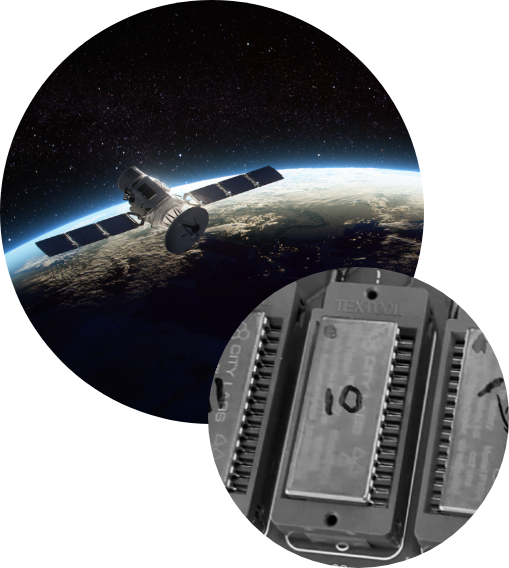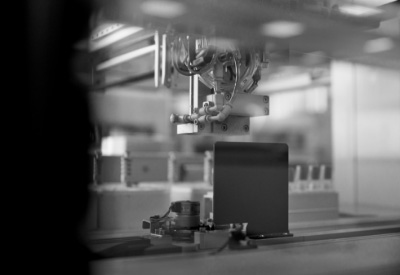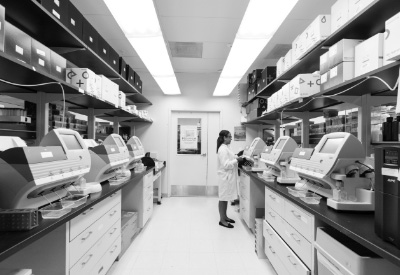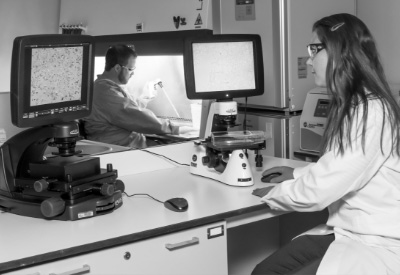
When it comes to powering satellite devices, the more robust the power source, the better. Batteries exhibit distinct behaviors in the vacuum of outer space in contrast to Earth’s ambient conditions. This poses significant and unique challenges regarding the powering of electronic devices in space, necessitating solutions to ensure the proper functioning of key satellite components over extended durations.
Several different power sources—including solar arrays, nuclear radioisotope thermoelectric generators (RTGs), fuel cells, and batteries—can be used to power spacecraft. Despite different strengths and weaknesses, each power source must be able to survive the many physical and environmental challenges associated with space travel.

Radiation
As satellites operate above Earth’s protective atmosphere, they are subject to several sources of space radiation. Extended exposure of satellite components to space radiation can result in significant and irreversible damage to electronic components. This damage can lead to physical deterioration, causing malfunctions, reduced operational efficiency, and other detrimental effects.
For this reason, satellites employ various strategies to mitigate the adverse effects of radiation, including shielding, radiation-hardened components, duplicate onboard systems, and more. Despite these strategies, complete avoidance of radiation exposure is not feasible. Therefore, there is a pressing need for robust, radiation-resistant electronic components to be developed for incorporation into future satellites.
Extreme Temperature
One of the main challenges in powering electronic devices in space is how cold outer space is, with the average temperature generally falling between 2–3 degrees Kelvin (around -455 degrees Fahrenheit). Unsurprisingly, batteries face unique operational challenges in this environment, with lower temperatures generally resulting in reduced current output. Traditional batteries that rely on volatile chemical reactions are especially susceptible to extreme temperatures and are prone to decreased performance or catastrophic failure.
Surviving Launch Conditions
Even the act of exiting Earth poses its own set of challenges, as the launch process and subsequent attaining of orbit requires batteries and electronic components to withstand intense acceleration and vibration. For this reason, any electronic components incorporated on satellites must undergo rigorous stress testing to simulate launch conditions and ensure proper post-launch functioning.
Battery Resilience
Over time, traditional batteries may experience a decline in fidelity and structural integrity, resulting in detrimental effects, such as acid or gas leakage, that can corrode adjacent electronic components and impact spacecraft functionality. In space, rechargeable batteries face the challenge of losing efficiency over time, which is further complicated by the degradation of external charging components like solar panels. This results in a continuous decline in the available power supply, so it is of the utmost importance to ensure onboard power supplies are extremely robust and not at risk of catastrophic failure.
Repair Difficulties
Satellites depend on many factors to operate effectively, typically requiring fuel, precise positioning, and several onboard electronics. Over time, core systems may fail, including critical electronic components, rendering the satellite obsolete. Given the substantial development cost and critical services offered by satellites, the ability to perform in-orbit repairs is highly desirable for extending their operational lifespans.
Repairing satellites in space is a complex undertaking, and given the large number of satellites in orbit, it is not currently practical to fix every satellite requiring maintenance. As such, there is significant demand for the development of durable and long-lasting satellite components to prevent—or at least postpone—the necessity for satellite maintenance. This is particularly relevant for electronic components that play a vital role in core device operations and communication with Earth.
Satellite Imaging Overview
Thousands of active satellites currently orbit Earth for both government and commercial purposes, serving a variety of diverse applications. Perhaps satellites’ most notable function is remote sensing, the collecting and processing of detailed imaging data from vast distances. Remote sensing satellite images are extensively utilized across multiple industries, serving important applications such as navigational GPS technology, space debris monitoring, calculation of optimal solar array angles, and even providing support to national security and defense endeavors.
What Is an Image Sensor?
Satellite imaging is powered by small sensors that are typically hard-wired to main satellite components and draw power from the satellite. Therefore, it is critical to ensure that satellite sensors do not draw too much power away from other essential satellite components, while also prioritizing the durability of sensors to prevent malfunctions that could affect interconnected circuitry. While these design considerations may impose limitations on imaging capabilities, they are crucial for maintaining uninterrupted satellite operations.
Powering Satellites
Both primary and secondary batteries are used to power satellites. The defining feature of primary batteries is that they can only be discharged once since irreversible chemical reactions power them. Conversely, secondary batteries can be recharged multiple times by external power sources, such as solar cells or radioisotope generators. As a result, primary batteries have generally been used for short-duration tasks, and secondary batteries for long-term functions.
As satellites become more complex and durable, the limitations of power sources that can only be used once or can only draw power from other crucial components have become increasingly apparent. A potential solution to this dilemma can be found in ultra-low-power batteries.
Ultra-Low-Power Batteries in Space
While core satellite operations require more power than an ultra-low-power battery can supply, they rely on several smaller electronic components like image sensors that could benefit from ultra-low-power batteries for daily functions. Ultra-low-power batteries offer the additional advantage of operating independently from primary satellite power supplies. This benefit allows essential satellite components that draw from the limited primary battery supply to operate for extended periods. Although not extensively utilized in current satellites, recent advancements in nuclear energy indicate ultra-low-power batteries could play a crucial role powering future satellites.
City Labs: Pioneering the Future of Satellite Power

City Labs is a global leader in nuclear battery technology, known for pioneering ultra-low-power NanoTritium™ batteries that can power important microelectronic components for extremely long periods of time without relying on external power sources to function. City Labs is dedicated to researching and developing cutting-edge ultra-low-power battery products for various applications, with a particular focus on space technology.
City Labs’ ultra-low-power batteries show great promise in their ability to provide unique and transformative capabilities for space-based applications. Our novel nuclear battery technology is highly relevant to powering satellites, especially image sensors. Our tritium-powered batteries are resilient enough to endure launch conditions and withstand the harsh environment of outer space, while delivering the necessary power to enhance any satellite’s operational capabilities.
Next-generation image sensors could use City Labs’ NanoTritium™ battery technology for self-powering, providing critical capabilities, such as wireless communication, without drawing power from main satellite components. With potential applications for both low Earth orbit and deep space energy sources, this type of sensor could be incorporated for standalone “drop-in” solutions without the need for re-engineering existing satellite components. Furthermore, their extended lifespans guarantee decades of operation without needing replacement or repair.
Amidst the recent surge in interest and nationwide incentives to enhance research in the microelectronics industry, City Labs is dedicated to maintaining a leading position in the field. Our recent technological advances suggest a promising future for ultra-low-power solutions in reshaping space-based instrumentation and revolutionizing the capabilities of image-sensing satellites.
The Nuclear Battery Company With a Vision
Ready to power your next innovation or learn more about our technology?
Contact Us Today



